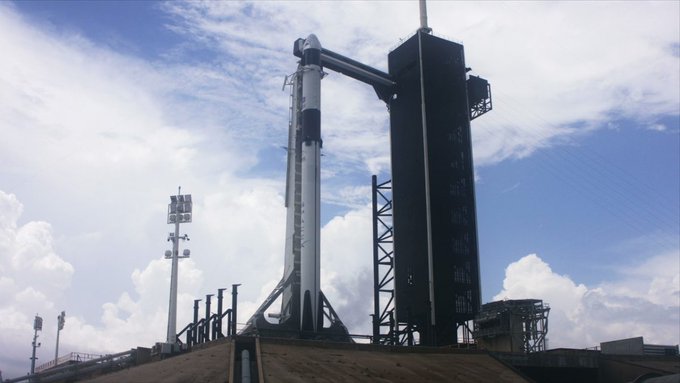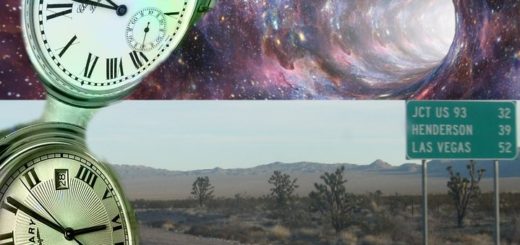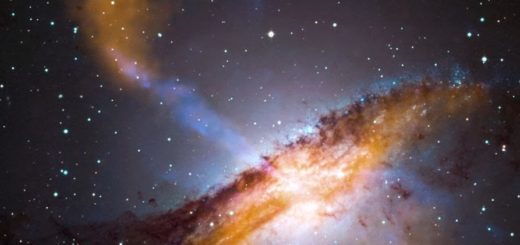SpaceX, NASA astronauts make preparations for second attempt at historic launch

SpaceX and NASA are making preparations for their second attempt at a historic launch that will see astronauts travel to space from U.S. soil for the first time since 2011.
NASA astronauts Doug Hurley and Bob Behnken are scheduled to launch from Kennedy Space Center’s launch pad 39A, at 3:22 p.m. EDT on Saturday. The launch pad was also used for the Apollo and space shuttle missions.
The first attempt to launch SpaceX’s Falcon 9 rocket and the Crew Dragon spacecraft was scrubbed just 16 minutes and 54 seconds before launch on Wednesday as a result of unfavorable weather in the flight path.
SPACEX AND NASA’S HISTORIC LAUNCH SCRUBBED AS A RESULT OF WEATHER
The weather violations included natural lightning and the strength of the electric field in the atmosphere.
“The countdown to #LaunchAmerica continues!,” tweeted NASA’s Commercial Crew program on Thursday, noting that the weather is 40 percent “go” for launch.
“The primary weather concerns for launch are flight through precipitation, anvil and cumulus clouds,” said NASA in a blog post on Thursday.
NASA’S DEMO-2 LAUNCH WITH SPACEX IS ‘SHOT OF INSPIRATION’ AMID CORONAVIRUS: FORMER ASTRONAUT MIKE MASSIMINO
“I’m so proud of the @NASA and @SpaceX team today, they were ready for launch. @Astro_Doug and I will be ready with them again on Saturday!,” tweeted Behnken on Wednesday.
Saturday’s launch of the Demo-2 mission will be the first time a private company, rather than a national government, sends astronauts into orbit.
President Donald Trump and Vice President Mike Pence, who is chairman of the National Space Council, were both at Kennedy Space Center for Wednesday’s launch attempt. Trump and Pence tweeted that they will both be back at Kennedy Space Center for Saturday’s launch.
50 YEARS AFTER APOLLO 11, NEIL ARMSTRONG’S SONS DESCRIBE THE DAY THEIR DAD WALKED ON THE MOON
Launched atop the Falcon 9 rocket, Crew Dragon will accelerate to approximately 17,000 mph, according to NASA, placing the capsule on course for the International Space Station. The duration of the astronauts’ stay on the orbiting space lab is yet to be determined.
STS-135, the last space shuttle mission, launched from Kennedy Space Center on July 8, 2011. The space shuttle Atlantis carried four NASA astronauts on the mission to resupply the ISS, as well as an experiment for robotically refueling satellites in space.
Since then, the U.S. has relied on Russian Soyuz rockets launched from the Baikonur Cosmodrome in Kazakhstan to get astronauts into space. Russia charges the U.S. about $75 million to send an astronaut into space.



 Creators of mankind
Creators of mankind Description of “Tall white aliens”
Description of “Tall white aliens” Where they came from?
Where they came from? About hostile civilizations
About hostile civilizations The war for the Earth
The war for the Earth “Tall white aliens” about eternal life
“Tall white aliens” about eternal life Video: “Nordic aliens”
Video: “Nordic aliens” Aliens
Aliens Alien encounters
Alien encounters The aliens base
The aliens base UFO
UFO Technology UFO
Technology UFO Underground civilization
Underground civilization Ancient alien artifacts
Ancient alien artifacts Military and UFO
Military and UFO Mysteries and hypotheses
Mysteries and hypotheses Scientific facts
Scientific facts


















